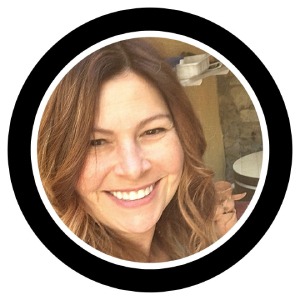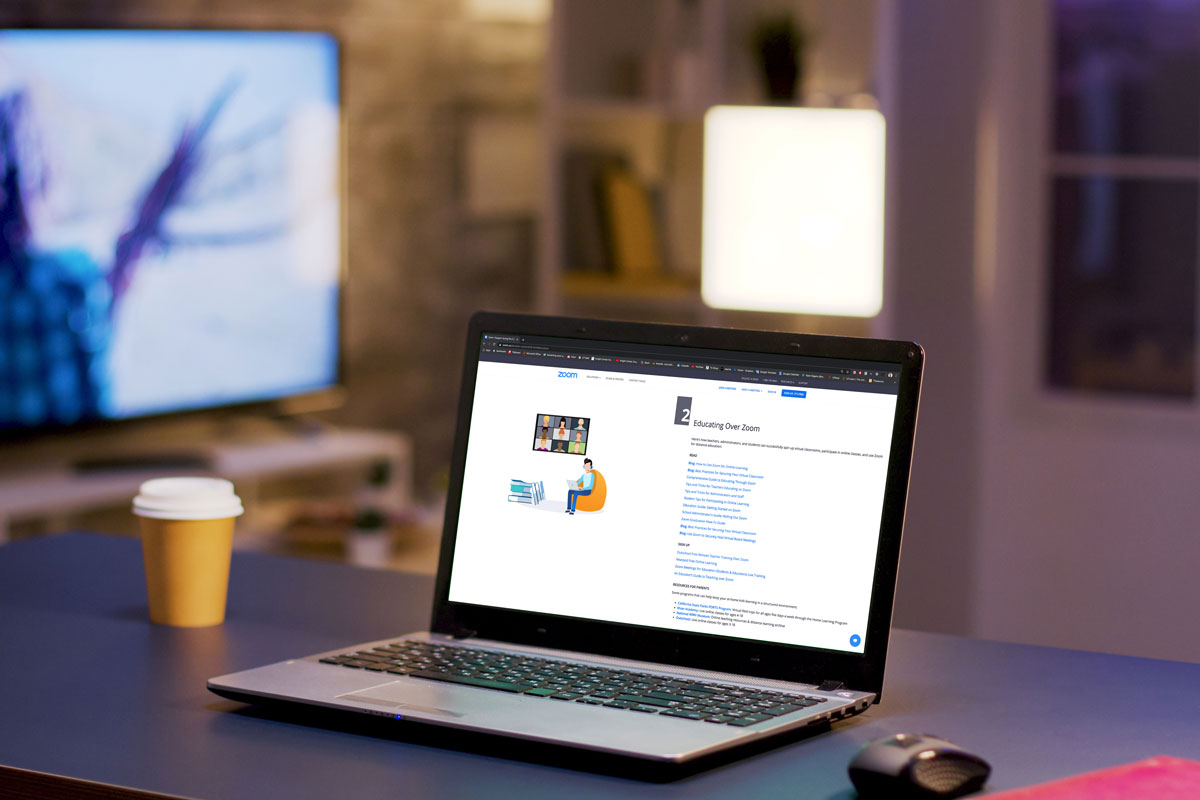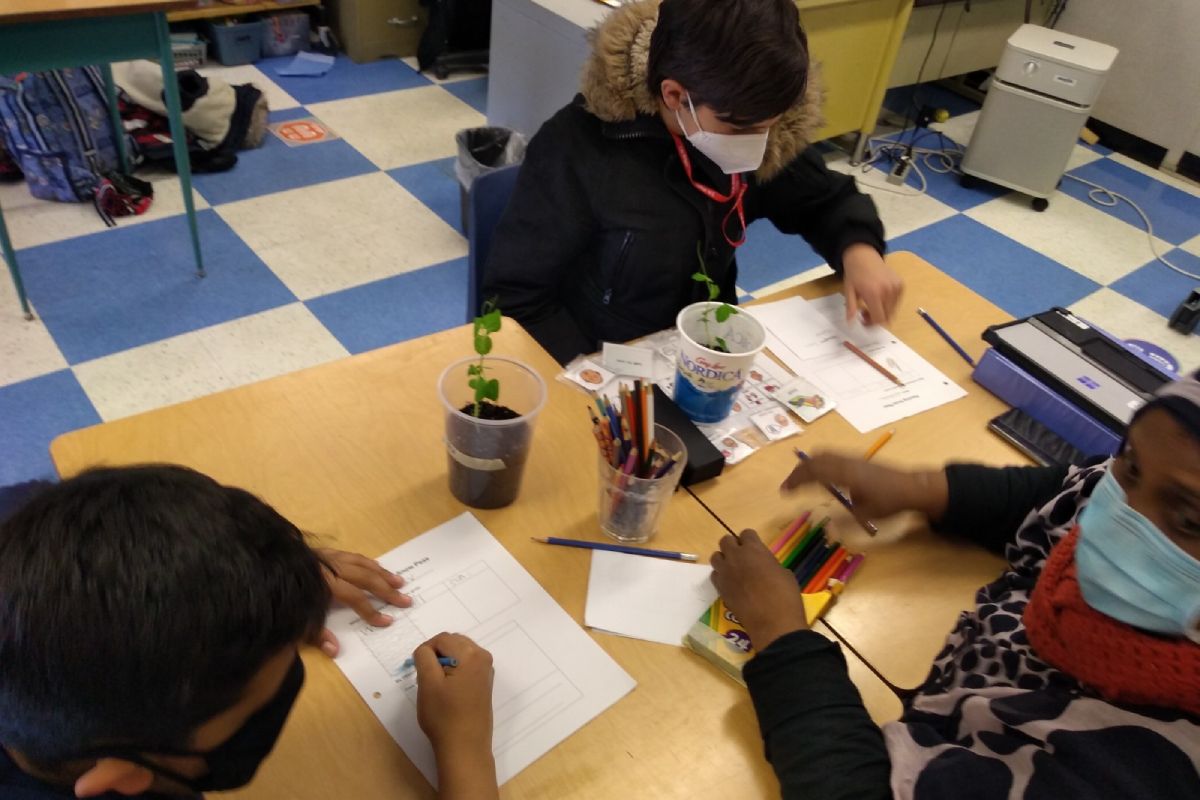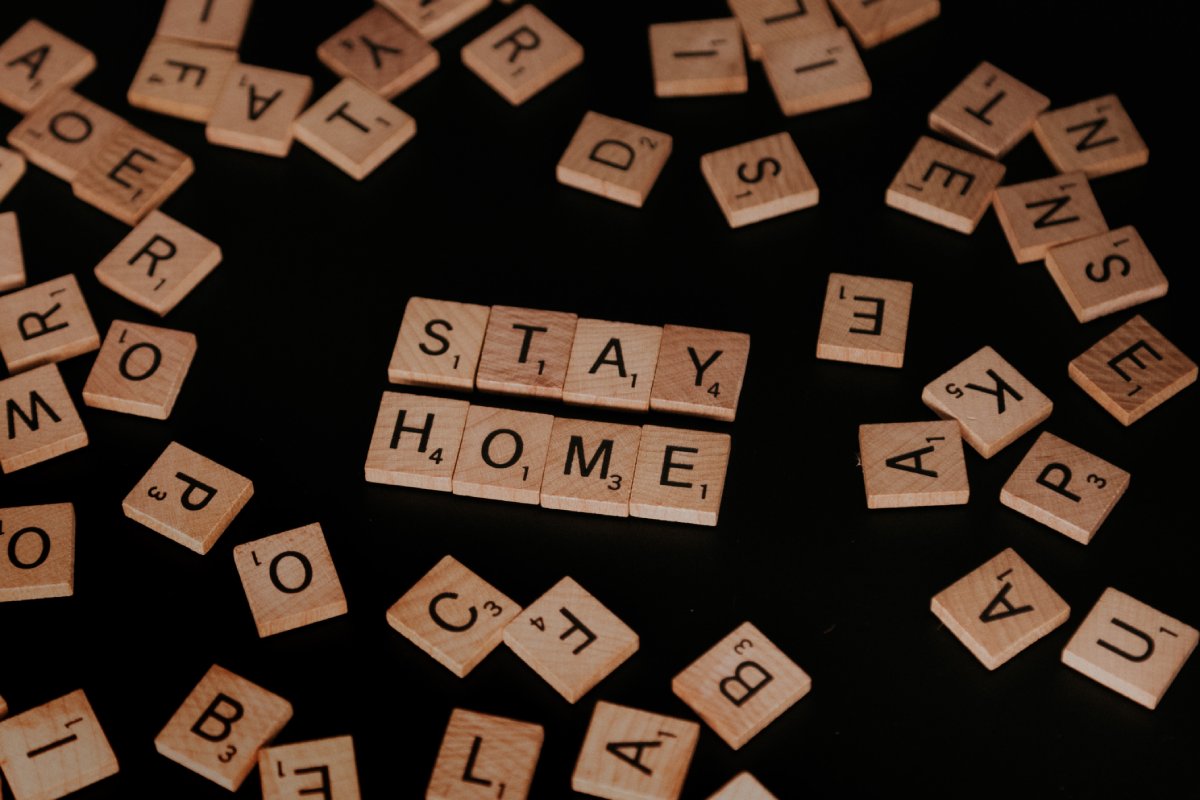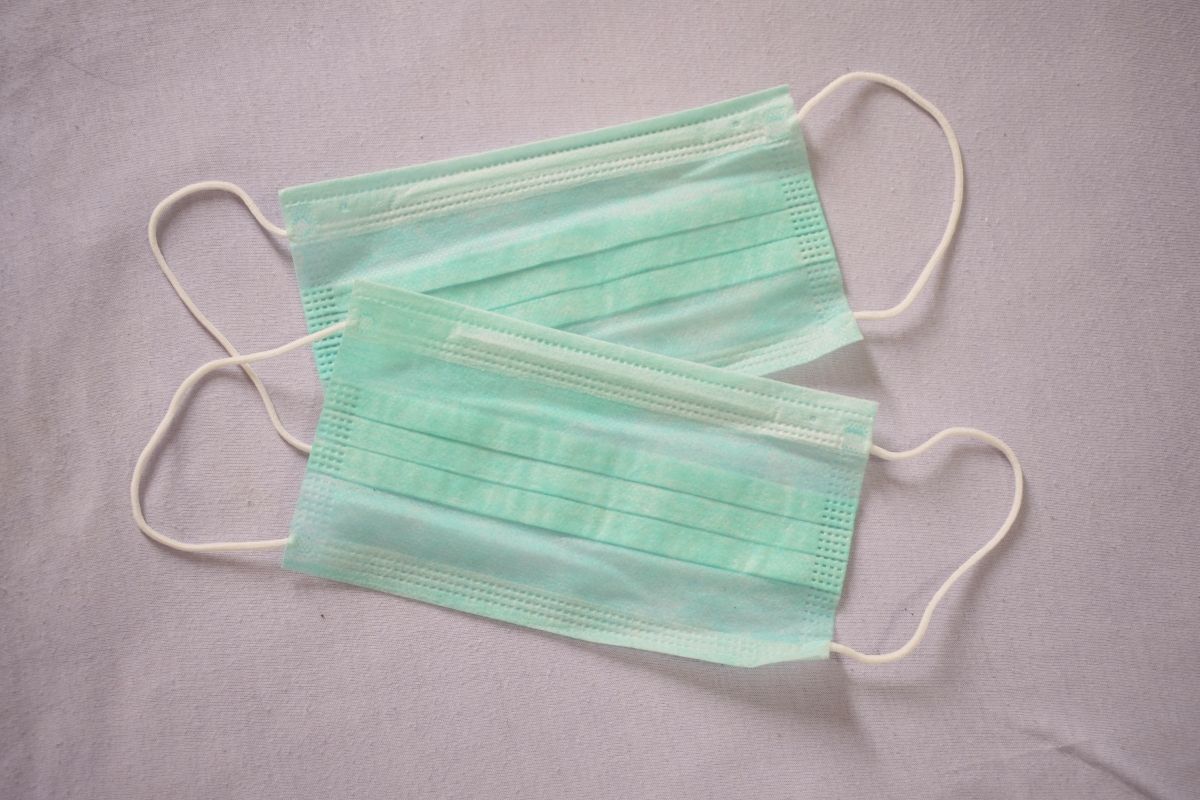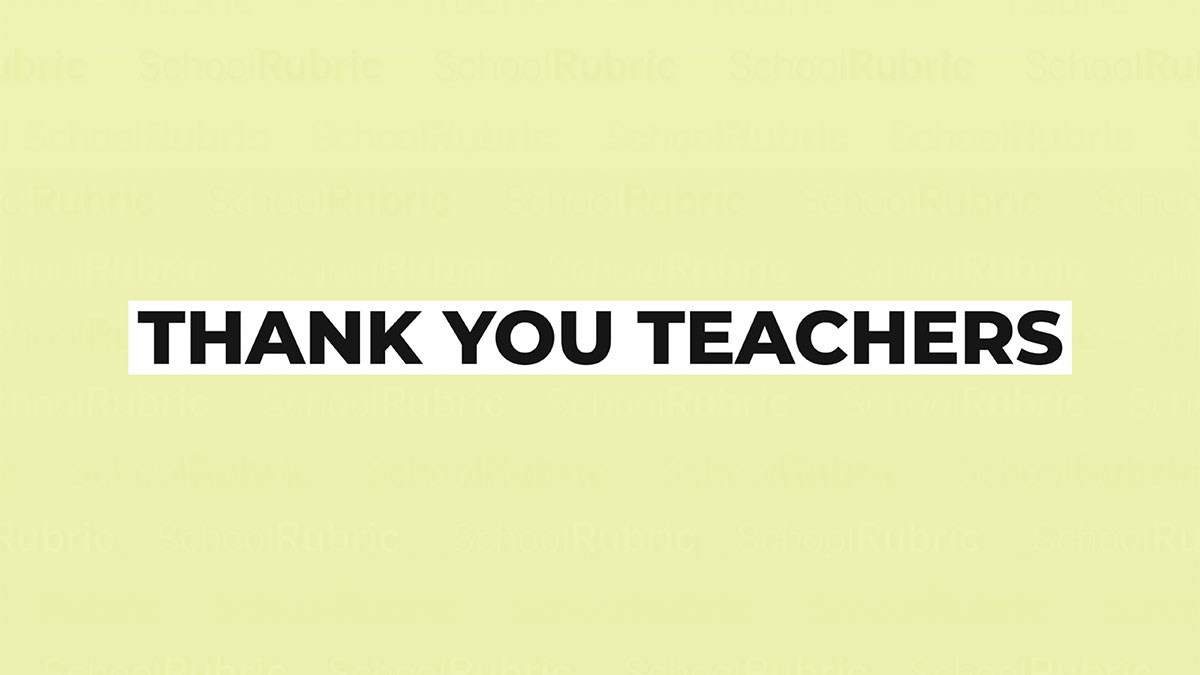Seize the Paintbrush!
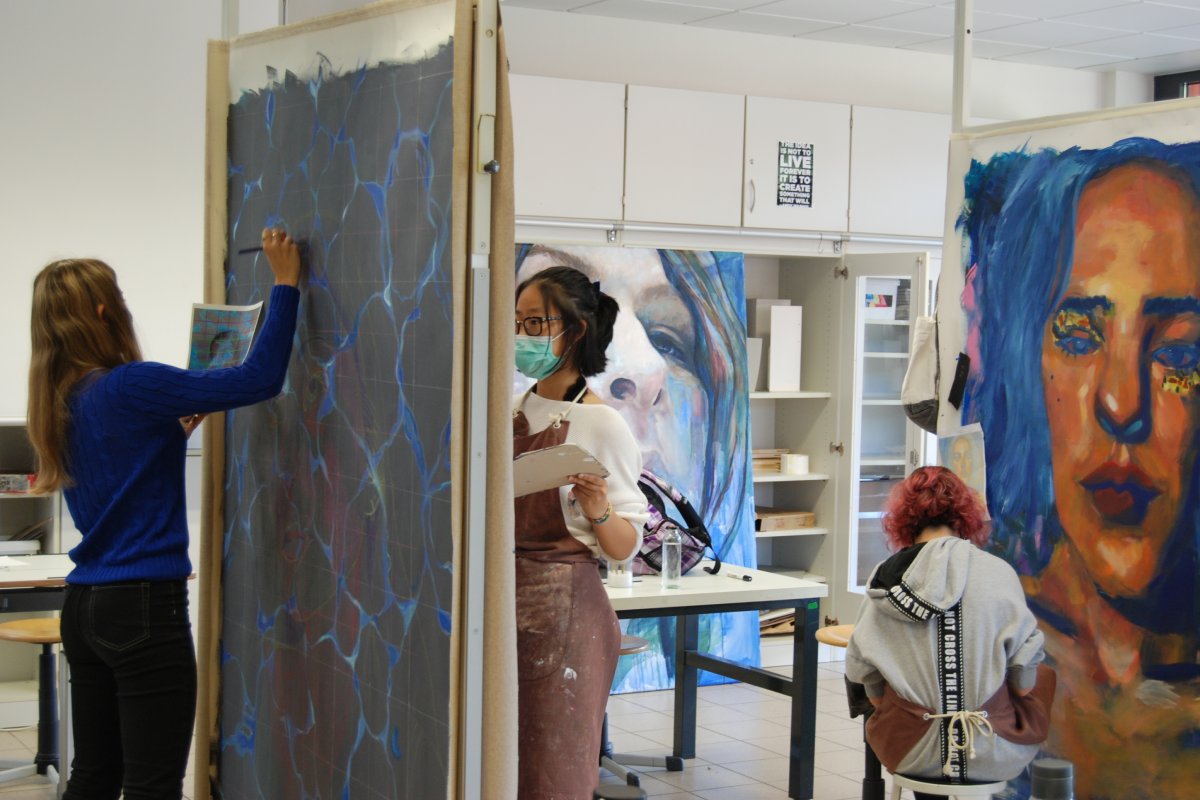
It is Monday morning and I can’t wait to go to work. I know that may sound ridiculous because, after all, who wants to go to work on a Monday morning? Like much of the world, we switched to distance learning in March of 2020 where we worked our way through the trial and error of distance and hybrid learning environments. Since August we have been back in the classroom with the reality that at any time students and teachers are required to do distance learning due to direct contact with COVID-19. Certainly, the risks of coming back to campus are real and I am reminded of them with each of our socially distanced conversations. So why am I so eager to go to work? The answer is simple, because I can! I fully appreciate the luxury of seeing my students masked face to masked face each day.
The COVID-19 pandemic has undoubtedly reshaped the way many of us approach teaching. With this crisis comes profound challenges and opportunities to transform and progress. However, how can you transform and progress while we are still in the midst of the crisis and facing the uncertainty that each day brings? My approach can be summed up by planning for full-on distance learning, and embracing all the possibilities of face to face teaching while we can.
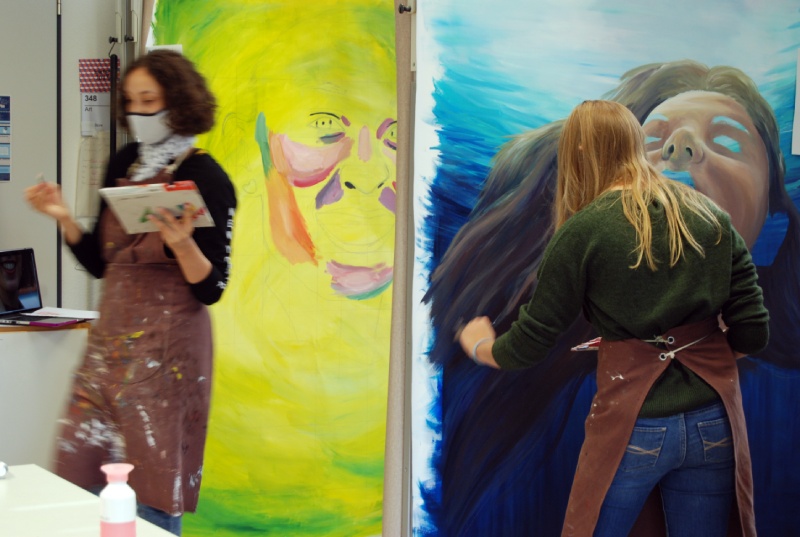
I teach Visual Arts at Frankfurt International School in Germany. In person, we can be much more flexible and I am capitalizing on that by working on ambitious projects in the classroom while laying the foundation to work on independent work that can be translated to hybrid or distance learning. Through this process I have learned the benefits of asynchronous tools in a synchronous learning environment.
My goal for this year is to create multiple pathways for success that are adaptable. In order to do this, I have created an extensive network of online resources. One example of this are my video demonstrations that range from project overviews, to teaching specific skills and techniques. Student absences due to quarantine or staying home for precautionary measures due to minor illnesses means our classrooms aren’t always full. If a student misses a crucial demonstration then they can watch it at home. I also use the videos in the classroom to keep us socially distanced rather than huddled closely around a table watching me demonstrate in real time. With the added advantage of time lapse my demonstrations can go a lot faster. However, the best perk is that the students can watch and rewatch/pause the video to work along at their own pace and to curate the lesson to meet their needs specifically. Taking the learning and putting it into the students hands, offers them agency. Then they are free during class time to embrace the studio work space, the materials on hand, engage in teacher and peer feedback and work without abandon. I can already see this approach being part of my teaching post COVID.
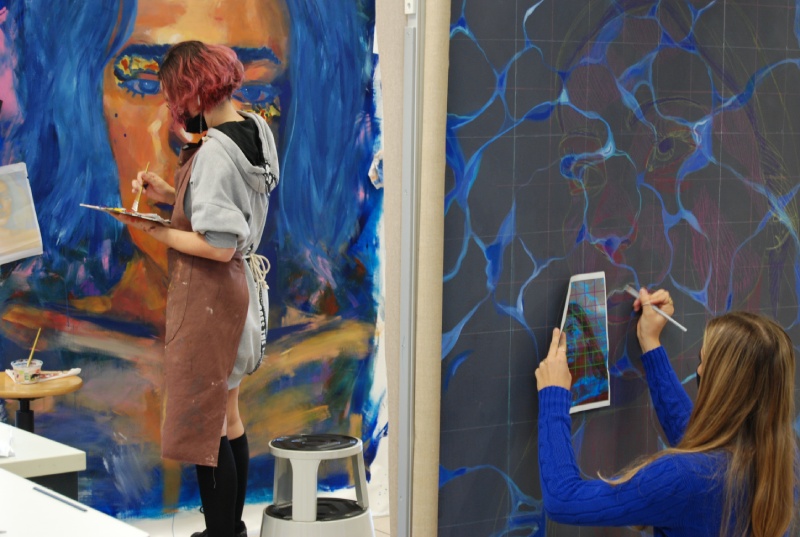
My grade 11 International Baccalaureate (IB) Visual Arts students are working on large scale oil and acrylic self-portraits. These larger than life paintings tower over their heads at almost 200cm. Each student created a pathway of expression limited only by the scale and the inclusion of their face as the main tool of symbolic communication in the work. They have been removed from their comfort zone and accepted this large scale painting challenge. One of the students said, “It feels good to be back in the art classroom” and “it definitely makes the productivity go up.” The students are seizing the opportunities of the face to face classroom while prepping and planning for their own multiple pathways for success. Another student said, ”Personally, I am not too concerned if we were to quarantine, since I specifically planned my second project to adapt to home school situations.” So far, I have been met with positive reactions from the students on this approach and we always keep the lines of communication open to address any reservations or concerns. This way I can be receptive to their needs and preferences while simultaneously embracing the best of face to face teaching and distance learning.
Through this work I have seen my students be resilient, innovative, and creative, but these are trying times and I know that above all student well-being needs to be at the forefront of any learning. It is my role to help each student find their pathway to success. I am grateful for my students stepping up and embracing all the possibilities of being in the classroom. It is important for me to remain flexible in order to enable students to make more choices about their artwork and their learning. This agency helps students self-manage and think critically, in conjunction with helping them be motivated and invested in their work while fostering independence. Harnessing the student’s own intrinsic motivation to learn, each student strives to ultimately take full ownership of their learning.
Knowing that our in class work can be and has been put on hold due to quarantine, I have built the basis of learning and demonstrations in a series of videos and online resources. I have been creating resources that can be applicable today but also cross-utilized for future lessons in a variety of applications. However, one of the biggest challenges in this approach to teaching is that it is hard to find the time and energy to see the bigger picture and to prepare and create long lasting resources. Here is an example of a series of videos I created for this particular large scale portrait painting unit and the videos can be used in a variety of combinations for other units.
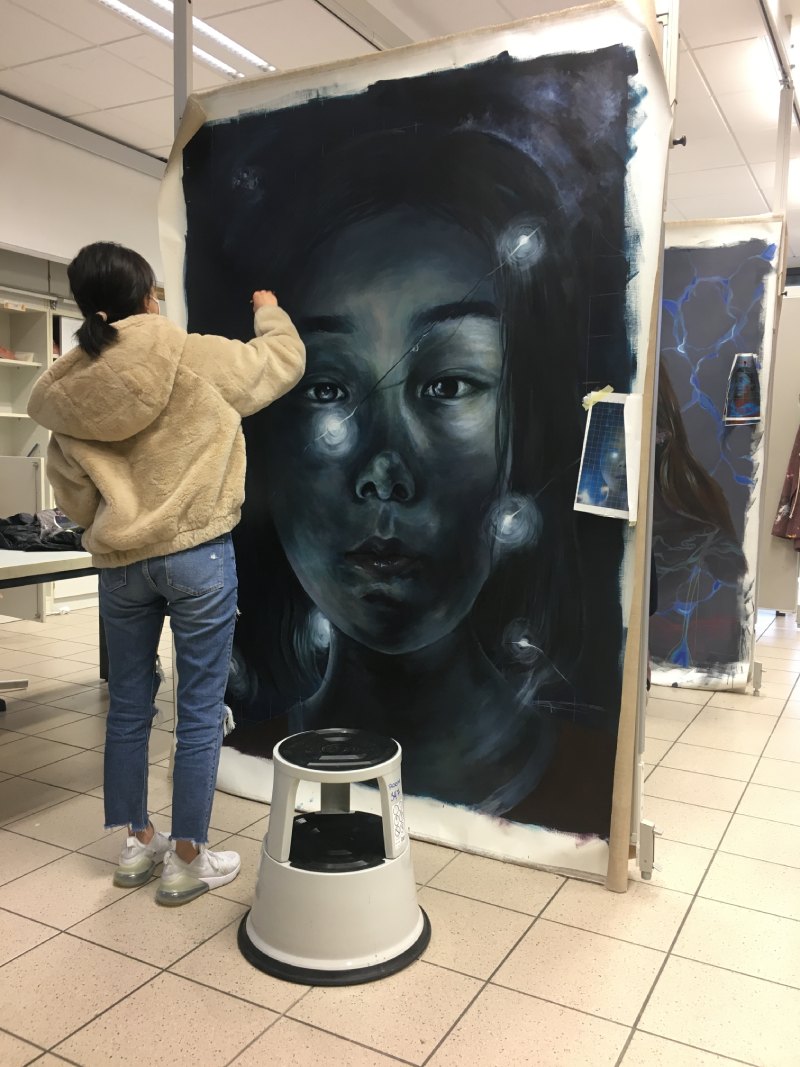
Where do we find time to create such enduring resources? How do we find time when teachers are asked to do more each day than ever before? I don’t have an answer for these questions. I make my way through pivoting and tweaking our curriculum all with Zoom fatigue and the physical drain of teaching with a mask. My prep and lunch periods are taken up with obsessively checking my emails from students that are quarantined, setting up one-to-one and small group Zoom sessions and monitoring students eating their lunches in their grade level bubbles in my classroom in addition to my “normal” teaching responsibilities. Each day we are operating in the shadow of a global pandemic, and it is exhausting. Coming up with best practices to teach in a constantly changing environment is arduous and I do not want all of my hard work to be left in a digital graveyard. What keeps me going is knowing that these resources will be useful for years to come when COVID-19 is in our rear view mirror.
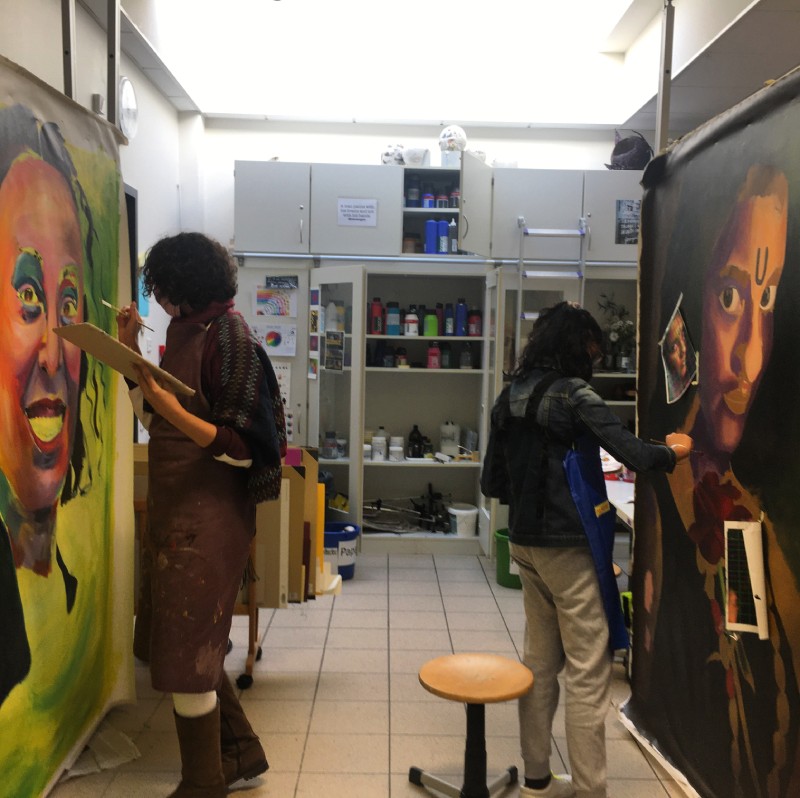
It remains unclear as to what the future implications of this pandemic will have on teaching and learning. When I enter my classroom on a Monday morning, I am aware that this is a gift that many teachers and students do not have right now. Sure, I may be tired from some late night video editing, but I see the smiling eyes of my students entering the classroom. I will embrace our face to face time to the fullest. Seizing the moment to support and guide students’ independent learning. When we finally return to our new normal, I will need to reset my baseline and embrace that education as usual is unrealistic and acknowledge the extraordinary that we have all experienced.
This article is available and can be accessed in Spanish here.

